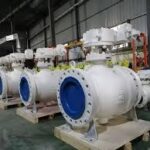Introduction to Section J Assessments
Section J assessments are an essential component of energy efficiency compliance in Australia, particularly for commercial buildings. Mandated under the National Construction Code (NCC), Section J sets out the energy efficiency requirements for non-residential buildings including offices, retail outlets, warehouses, and more. These assessments ensure that new buildings, as well as significant renovations or extensions, meet minimum standards for thermal performance, energy usage, and sustainability.
Section J assessments aim to reduce the overall carbon footprint of commercial infrastructure and improve occupant comfort through better thermal regulation. They are a crucial step in the building design and approval process, and failing to comply with Section J can result in costly delays and redesigns.
What is Section J?
Section J is one of the volumes in the National Construction Code (NCC), formerly known as the Building Code of Australia (BCA). Specifically, Section J pertains to the energy efficiency of Class 3, Class 5 to 9 buildings, which primarily include commercial structures.
The primary goal of Section J is to ensure that buildings are constructed in a manner that minimizes greenhouse gas emissions, reduces energy consumption, and optimizes thermal comfort. This is achieved by regulating various building components such as the building fabric, glazing, building sealing, artificial lighting, power systems, HVAC (heating, ventilation, and air conditioning), and hot water systems.
When Are Section J Assessments Required?
Section J assessments are required during the design phase of new commercial buildings or when significant modifications are made to existing buildings. These assessments are necessary for:
- New commercial building constructions
- Major renovations or refurbishments
- Extensions or additions to existing commercial properties
- Change in building use (e.g., converting a warehouse into an office)
The assessments must be completed and submitted as part of the Development Application (DA) or Building Permit process to demonstrate compliance with the NCC.
Components of a Section J Assessment
Section J is divided into several subsections, each covering different aspects of a building’s energy performance. A complete Section J assessment will evaluate all the following areas:
J1: Building Fabric
This section assesses the thermal properties of the building envelope, including walls, floors, and roofs. It ensures that materials and construction methods provide adequate insulation and thermal resistance to reduce heat flow.
J2: Glazing
Glazing assessments focus on the type, size, orientation, and performance of windows and glazed doors. The aim is to balance natural light and solar heat gain with thermal efficiency.
J3: Building Sealing
Proper sealing of a building prevents unwanted air leakage, which can significantly impact energy consumption and indoor comfort. Section J assessments will check for appropriate sealing of doors, windows, and other openings.
J5: Air Conditioning and Ventilation Systems
HVAC systems are evaluated for energy efficiency. Section J requires that equipment meets minimum performance standards and that systems are designed to match the building’s thermal performance and occupant load.
J6: Artificial Lighting and Power
This subsection assesses lighting systems for efficiency and suitability. It includes calculations of lighting power density, control mechanisms like motion sensors, and efficient lighting design that meets the visual needs of occupants.
J7: Hot Water Supply
Where applicable, assessments of hot water systems ensure that energy-efficient technologies are used and that systems are appropriately sized and located.
J8: Access for Maintenance and Monitoring
This ensures that systems are accessible for routine maintenance and that energy usage can be monitored over time to ensure continued compliance and performance.
Methods of Compliance
There are two main pathways to demonstrate compliance with Section J requirements:
Deemed-to-Satisfy (DTS) Provisions
This approach uses pre-defined solutions and standards outlined in the NCC. If the building design meets these standards, it is automatically considered compliant. This method is often used for simpler projects where innovation or unique design features are not required.
Performance Solution
A Performance Solution offers more design flexibility and innovation. It involves detailed modeling and simulations, such as JV3 modeling, which compares the proposed building’s energy use to a reference building. This method allows for trade-offs between different building elements to achieve overall compliance.
Benefits of Section J Assessments
There are several long-term and immediate benefits to undertaking a Section J assessment:
- Energy Efficiency: Lower operational costs through reduced energy use.
- Environmental Impact: Reduced carbon footprint and alignment with sustainability goals.
- Occupant Comfort: Better thermal regulation and air quality.
- Compliance: Avoid penalties and project delays by adhering to regulatory requirements.
- Market Value: Buildings with high energy efficiency ratings often attract higher occupancy rates and resale values.
Who Can Conduct Section J Assessments?
Only qualified and experienced professionals, such as accredited energy consultants or building sustainability assessors, should perform Section J assessments. These professionals must understand both the technical and regulatory aspects of the NCC and use specialized software tools to evaluate compliance.
Choosing a competent assessor ensures that the report is accurate, accepted by authorities, and provides valuable insights for optimizing building design.
Common Challenges in Section J Assessments
Despite its importance, Section J compliance can pose challenges to developers and architects. Some of the common issues include:
- Complex Building Designs: Unique or innovative designs may require performance solutions that are more complex and time-consuming.
- Budget Constraints: Achieving compliance with high-performance building elements may increase upfront costs.
- Changing Regulations: The NCC is regularly updated, and staying current with changes is essential.
- Lack of Coordination: Poor communication between architects, builders, and assessors can lead to non-compliant designs.
Overcoming these challenges requires early integration of energy assessments in the design process and collaboration across all stakeholders.
Section J and Sustainability Certifications
Section J assessments also play a critical role in achieving broader sustainability certifications like NABERS (National Australian Built Environment Rating System) and Green Star. Meeting or exceeding Section J requirements can contribute to higher ratings in these systems, further enhancing a building’s marketability and operational performance.
Conclusion
Section J assessments are a vital part of the commercial building approval process in Australia. They ensure that buildings are designed and constructed with energy efficiency, environmental responsibility, and occupant comfort in mind. Whether through Deemed-to-Satisfy provisions or Performance Solutions, complying with Section J can bring significant benefits both in terms of operational savings and environmental impact.
Investing in a thorough and professional Section J assessment not only helps you meet legal requirements but also supports a more sustainable and profitable future in the built environment. Whether you’re a developer, architect, or builder, understanding and embracing Section J assessments is essential for the successful delivery of any commercial construction project.





